Discover essential bee hive stand plans to elevate your apiary setup. These plans provide detailed guides for constructing sturdy stands‚ ensuring optimal hive placement and beekeeping efficiency.
Understanding the Importance of Hive Stands in Beekeeping
Hive stands are crucial for maintaining healthy and productive beehives. They elevate the hive off the ground‚ preventing moisture damage and reducing pest access. By providing a stable and level base‚ hive stands ensure bees can efficiently manage their hive. Additionally‚ stands improve accessibility for beekeepers‚ making inspections and hive management easier. They also protect the hive entrance from being obstructed by vegetation. A well-designed hive stand enhances overall beekeeping efficiency and supports the well-being of the bee colony. It’s a foundational component that every beekeeper should prioritize for successful apiary management.
Overview of the Purpose and Benefits of Hive Stands
Hive stands serve as essential structures in beekeeping‚ offering numerous benefits that enhance hive management and bee health. Their primary purpose is to elevate hives‚ keeping them off the ground to protect from moisture‚ pests‚ and vegetation. This elevation also improves airflow and reduces the risk of disease. Additionally‚ hive stands provide a stable and level surface‚ ensuring the hive remains secure and balanced. They also enhance accessibility for beekeepers‚ making inspections and maintenance easier. Furthermore‚ hive stands can accommodate multiple hives‚ optimizing space in the apiary. By investing in a well-designed hive stand‚ beekeepers can promote healthier colonies‚ improve efficiency‚ and extend the lifespan of their hives.

Choosing the Right Materials for Your Hive Stand
Select durable‚ weather-resistant materials like pressure-treated lumber‚ cedar‚ or pine for your hive stand. These options ensure longevity and protection against rot and pests‚ ideal for outdoor use.
Recommended Lumber for Hive Stand Construction
For durability‚ consider using pressure-treated 4×4 lumber or naturally rot-resistant woods like cedar or pine. These materials withstand outdoor conditions and protect against pests. Pressure-treated lumber is ideal for ground contact‚ while cedar and pine offer natural resistance without chemical treatment. Ensure all lumber is properly sealed or treated to prevent moisture damage. Avoid using softwoods that may warp easily. Opting for high-quality‚ weather-resistant materials ensures your hive stand remains stable and secure for years‚ supporting the health and productivity of your bee colony. Proper material selection is crucial for the longevity and safety of your hive stand.
Essential Fasteners and Hardware for Durability
Galvanized or stainless steel fasteners are crucial for hive stand durability‚ as they resist rust and corrosion. Use 2-3 inch deck screws or carriage bolts for securing heavy sections. Weatherproof wood glue can enhance joint strength. Consider adding angle brackets or corner braces for extra stability. Galvanized lag screws are ideal for anchoring the stand to the ground‚ preventing shifting over time. Ensure all hardware is rated for outdoor use to withstand moisture and pests. Properly securing your hive stand with durable fasteners ensures safety and longevity‚ protecting both the bees and the structure from environmental stress. Quality hardware is a small investment for long-term reliability.
Optional Materials for Weatherproofing and Stability
Consider adding weatherproofing materials like silicone sealant or waterproof glue to protect your hive stand from moisture. Flashing or metal edging can shield the stand from pests and weather damage. Gravel or paving stones under the stand improve drainage and prevent dampness. For extra stability‚ use metal anchors or straps to secure the stand to the ground. Pressure-treated lumber can be an optional upgrade for long-term durability. These additions enhance the stand’s resilience against environmental factors‚ ensuring your hive remains safe and protected. Incorporating these materials can extend the lifespan of your hive stand and improve overall apiary performance.

Tools You’ll Need to Build a Hive Stand
Gather essential tools like a saw‚ drill‚ and level for precise cuts and assembly. Include a tape measure and clamps for accuracy and stability.
Basic Tools for Cutting and Assembling Wood
Start with a hand saw or circular saw for cutting lumber. A drill is essential for pre-drilling holes to prevent splitting. Use a hammer for tapping pieces into place and clamps to hold wood steady. A tape measure ensures accurate cuts‚ while a square helps maintain right angles. Sandpaper smooths rough edges‚ and a level guarantees everything is even. These tools form the foundation for building a sturdy hive stand‚ promoting stability and longevity for your beehives.
Specialized Tools for Precise Measurements and Fittings
For precise cuts and fittings‚ a miter saw or compound miter saw ensures clean‚ angled cuts. A precision square guarantees accurate right angles‚ while a marking gauge helps make consistent measurements. Use bar clamps or cauls to align and hold pieces securely during assembly. A drill press adds precision for drilling straight‚ evenly spaced holes. These tools are essential for achieving tight joints and proper alignment‚ ensuring your hive stand is both stable and durable. They are particularly useful for intricate designs or custom hive stand plans‚ where accuracy is key to the structure’s integrity.
Design your hive stand with optimal height‚ ensuring easy access while protecting hives from pests. Ensure stability and leveling for secure hive support and bee safety. The height of your hive stand is crucial for optimal hive placement. A stand that is too low may expose the hive to moisture and pests‚ while one that is too high can make hive management difficult. Aim for a height of around 12-18 inches to keep the hive off the damp ground and reduce the risk of vegetation blocking the entrance. This elevation also provides easy access for beekeepers‚ making inspections and hive maintenance more efficient. Proper height ensures the hive remains dry‚ stable‚ and accessible‚ promoting healthy bee activity and productivity. A stable and level hive stand is essential for secure hive support. Use materials like pressure-treated 4×4 lumber or cinder blocks to ensure durability. Leveling the stand prevents hive collapse and ensures even weight distribution. Place the stand on firm‚ even ground and adjust as needed using shims or gravel. Proper leveling also makes hive management easier‚ reducing strain during inspections. A stable stand protects the hive from tipping and minimizes stress on the bees‚ creating a safe and secure environment for your apiary to thrive. A well-designed hive stand ensures easy access and ample space for managing your bees. A bench-style stand with a wide platform allows comfortable working space‚ reducing strain during inspections. Proper spacing around the stand prevents overcrowding and makes it easier to move equipment. Elevated stands also keep hives away from vegetation‚ ensuring clear access to the entrance. Consider a design that allows for easy addition of multiple hives‚ promoting efficient apiary management. Adequate space and accessibility features enhance your beekeeping experience‚ making regular maintenance and hive checks more efficient and enjoyable for both you and your bees. Start by preparing materials like 4×4 lumber and deck screws. Construct the frame‚ ensuring stability. Assemble components securely‚ following your chosen plan for a durable hive stand. Begin by gathering all necessary materials‚ such as 4×4 lumber‚ deck screws‚ and weatherproof glue. Cut the wood according to your plan’s specifications. Sand rough edges for smooth assembly. Organize hardware like galvanized screws and flat washers to ensure easy access during construction. If using optional materials‚ apply wood sealant or waterproofing treatments to enhance durability. Double-check measurements to avoid mismatches. Proper preparation ensures a seamless assembly process and a sturdy hive stand. Lay out all components in a logical order to streamline your workflow. This step is crucial for achieving professional-grade results. Start by building the base using 4×4 lumber‚ ensuring legs are equally spaced and of the same height. Attach crossbeams between the legs using 2×4 lumber for added stability. Next‚ construct the frame to fit your hive type‚ ensuring it is slightly larger than the hive itself for easy placement. Use deck screws and galvanized flat washers to secure all joints. Apply weatherproof glue to critical connections for added durability. Ensure the frame is level and sturdy before proceeding. Proper construction of the frame and base is essential for supporting the hive’s weight and maintaining stability. Assemble the pre-cut frame and base components using weatherproof screws and galvanized washers for durability. Ensure all joints are tightly secured to prevent shifting. Use wooden brackets to reinforce corners and provide additional stability. Apply wood glue to all mating surfaces before screwing them together. Once the frame is assembled‚ attach the base legs‚ making sure they are evenly spaced and level. Double-check all connections for tightness. Finally‚ sand any rough edges and apply a protective finish to shield the wood from moisture. Proper assembly ensures the stand remains stable and secure for your hives. Ensure the ground is level and stable before placing the hive stand. Position it away from moisture and vegetation for optimal bee health and accessibility. Leveling the ground is crucial for proper hive stand placement. Start by clearing the area of debris and vegetation. Use a shovel to create a flat surface‚ ensuring it’s even and firm. Check the ground with a carpenter’s level to confirm it’s perfectly horizontal. If necessary‚ add gravel or sand to stabilize the soil. A well-leveled base prevents the stand from tilting‚ ensuring hive stability and easy access for bees. Proper leveling also protects the hive from moisture and pests‚ promoting a healthy environment for your colony. Positioning your hive stand strategically is key for a thriving apiary. Choose a location with morning sunlight to regulate hive temperature and reduce moisture. Ensure the stand is placed on level ground‚ ideally facing east to southeast. Avoid shaded areas to prevent dampness and pests. Keep the stand at least 10 feet away from obstacles to allow easy access for bees and beekeepers. Consider wind direction to shield hives from harsh winds. Proper positioning enhances bee activity‚ hive health‚ and overall beekeeping efficiency‚ creating an ideal environment for your colony to flourish. Regularly clean and inspect your hive stand to prevent pest infestations and decay. Apply weatherproof treatments and ensure stability for optimal hive support and longevity. Regular cleaning and inspection of your hive stand are crucial for maintaining its integrity. Remove debris‚ mold‚ or pests that may accumulate‚ as these can weaken the structure. Use a stiff brush or pressure washer with mild detergent to clean surfaces. Inspect for signs of rot‚ cracks‚ or damage‚ especially in areas exposed to moisture. Replace any compromised wood promptly to ensure the stand remains stable and secure for your hives. This routine upkeep prevents issues before they escalate‚ protecting both your bees and your investment in the hive stand. Regular inspections help identify damage early‚ preventing costly repairs. For minor issues like cracks or rot‚ replace affected wood and secure with weatherproof glue and screws. For structural weaknesses‚ add support beams or brackets to reinforce the stand. Use galvanized hardware to protect against rust. If the stand has shifted or become uneven‚ level it by adjusting the base or adding shims. Addressing repairs promptly ensures the hive remains stable and safe for the bees. Always follow safety guidelines to avoid disturbing the colony during maintenance. Ensure stability to prevent hive collapse and protect both bees and beekeepers. Use durable materials and follow plans carefully to avoid structural weaknesses. Stability is crucial to prevent hive collapse and ensure bee safety. Use durable materials like pressure-treated lumber for the base and legs to withstand weight and environmental stress. A wide‚ level base enhances stability‚ while cross supports add rigidity. Always check for level ground or adjust the stand to maintain evenness. Avoid flimsy designs that may sway or topple under load. Regular inspections can catch weaknesses early‚ preventing catastrophic failures. A stable hive stand protects your bees and reduces the risk of damage during harsh weather or pests. Prioritize robust construction to safeguard your apiary investment and promote healthy bee activity. When building a hive stand‚ prioritize safety for both you and the bees. Wear protective gear like gloves and a veil to avoid stings. Use non-toxic‚ weather-resistant materials to ensure the stand is safe for your colony. Avoid using chemicals or paints that could harm the bees. Ensure the workspace is clean and free from debris. Handle tools carefully to prevent accidents. Consider working during times when bees are less active to minimize disturbances. Keep a smoker nearby to calm the bees if needed. Always follow proper beekeeping practices and safety guidelines to protect both yourself and your hive. This ensures a safe and successful construction process. Explore Langstroth‚ Top-Bar‚ and National hive stands‚ each offering unique benefits for beekeepers. These designs provide stability‚ accessibility‚ and durability‚ catering to various hive types and sizes effectively. The Langstroth hive stand is a popular choice among beekeepers due to its durability and compatibility with standard hive sizes. These plans typically use pressure-treated lumber for longevity and feature a simple‚ elevated design that protects hives from pests and moisture. The stand’s height is optimized for easy access‚ reducing strain during inspections. Many designs include space for multiple hives‚ making it ideal for apiaries with several colonies. Detailed PDF plans often include cut lists and assembly instructions‚ ensuring a sturdy and functional stand tailored to Langstroth hive specifications. This design is a practical solution for beekeepers seeking reliability and efficiency in hive management. Top-bar hive stands offer a unique solution for beekeepers preferring alternative hive designs. These stands are crafted to support top-bar hives‚ emphasizing natural bee behavior and minimal interference. Plans often specify materials like cedar or pine‚ with optional weatherproofing for durability; The design typically features a simple‚ low-profile structure with adjustable legs for uneven terrain. Some plans include additional features like integrated pest control or storage compartments. Ideal for small-scale or educational apiaries‚ these stands are lightweight and easy to assemble‚ making them a great choice for those exploring sustainable‚ chemical-free beekeeping methods. Their compact footprint suits urban and backyard beekeeping setups perfectly. National hive stand plans are designed to accommodate multiple hives‚ offering a practical solution for beekeepers managing larger apiaries. These stands typically feature a robust‚ flat roof design‚ allowing for the placement of up to three National hives. Constructed from durable materials like pressure-treated lumber‚ they provide long-lasting support and protection from the elements. Adjustable legs ensure stability on uneven ground‚ while the stand’s height promotes easy access for inspections. Some plans include expansion options for additional hives‚ making them ideal for growing beekeeping operations. Their sturdy design ensures safer hive management and efficient workspace for beekeepers handling multiple colonies simultaneously. Access detailed hive stand plans PDF online‚ offering step-by-step guides for constructing sturdy stands. These downloadable plans ensure easy customization and precise measurements for your beekeeping needs. Explore various online platforms to find hive stand plans. Free plans are often shared on beekeeping forums‚ DIY websites‚ and social media groups. Paid plans‚ offering detailed blueprints‚ can be found on marketplaces like Etsy or specialized beekeeping stores. Educational resources and agricultural extension services may also provide complimentary designs. These plans cater to different skill levels and hive types‚ ensuring you find the perfect fit for your apiary needs. Selecting the ideal hive stand plan involves considering your hive type‚ skill level‚ and available materials. For beginners‚ simple designs with basic tools are recommended. If you’re working with Langstroth or Top-bar hives‚ ensure the plan aligns with your hive’s dimensions. Check for features like adjustable height or weatherproofing to suit your climate. Customizable plans allow flexibility for multiple hives or unique setups. Look for detailed instructions and diagrams to ensure the plan matches your expertise. Prioritize plans with positive reviews or those recommended by experienced beekeepers to guarantee a successful build tailored to your apiary’s specific requirements. Personalize your hive stand by modifying plans to fit specific hive types‚ sizes‚ or unique apiary needs‚ ensuring functionality and efficiency in your beekeeping operations. Adjusting hive stand plans to accommodate different hive types‚ such as Langstroth or Top-Bar hives‚ ensures compatibility and optimal performance. For larger hives‚ increase the stand’s dimensions and support structure to maintain stability. Consider the height and spacing requirements for each hive type to facilitate easy access and management. Additionally‚ modify the base design for uneven terrain by incorporating adjustable legs or leveling feet. Customizing the stand’s length and width allows it to support multiple hives securely‚ making it ideal for expanding apiaries. Ensure all modifications align with the original plan’s structural integrity for durability and safety. Enhance your hive stand’s utility by incorporating practical features. Add a built-in storage compartment for tools or hive supplies to keep essentials within reach. Install a removable tray for capturing debris or excess honey‚ simplifying cleanup. Consider attaching a foldable roof or canopy to protect the hive from harsh weather conditions. Integrate leveling feet or adjustable legs for uneven terrain‚ ensuring stability on any ground. For added convenience‚ include handles or grips for easier mobility. These modifications not only improve functionality but also extend the stand’s versatility‚ making hive management more efficient and enjoyable for beekeepers of all skill levels. Building a hive stand enhances beekeeping efficiency and hive protection. Use detailed PDF plans to create durable‚ customizable stands for optimal bee health and productivity. For a successful hive stand‚ use durable‚ weather-resistant materials and ensure proper assembly on a level surface. Opt for pressure-treated lumber to prevent rot and insect damage. Always follow hive stand plans PDF instructions for precise measurements and fittings. Consider adding weatherproofing features like a roof or sealant for extra protection. Ensure the stand is stable and securely anchored to prevent collapse. Finally‚ test the stand’s weight capacity before placing hives to guarantee safety and reliability. These tips will help you build a long-lasting‚ functional hive stand that supports healthy bee colonies and simplifies beekeeping tasks. Embark on your beekeeping journey by constructing a reliable hive stand. With bee hive stand plans PDF‚ you’ll find clear‚ step-by-step guides to build a sturdy and functional stand. Whether you’re a novice or experienced beekeeper‚ these plans offer simplicity and precision. Start by gathering materials like pressure-treated lumber and essential tools. Follow the instructions carefully to ensure stability and durability. Building your hive stand is a rewarding project that enhances your apiary’s efficiency. Don’t hesitate—download your preferred plan today and begin creating a safe‚ elevated space for your bees to thrive. Your effort will pay off with healthier hives and easier beekeeping!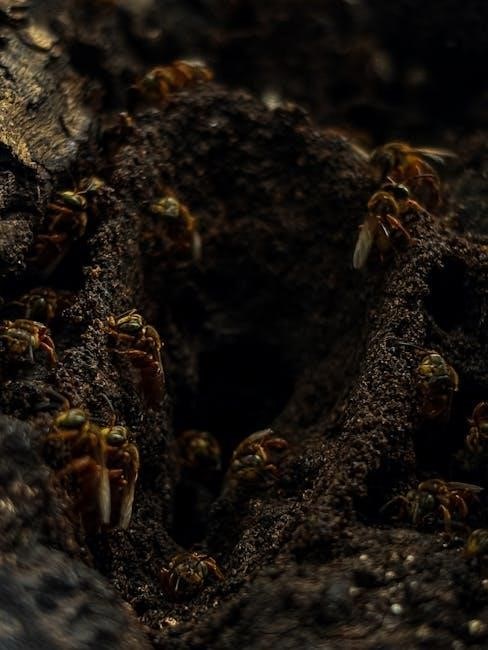
Design Considerations for Your Hive Stand
Height and Elevation for Optimal Hive Placement
Stability and Leveling for Secure Hive Support
Accessibility and Space for Easy Hive Management
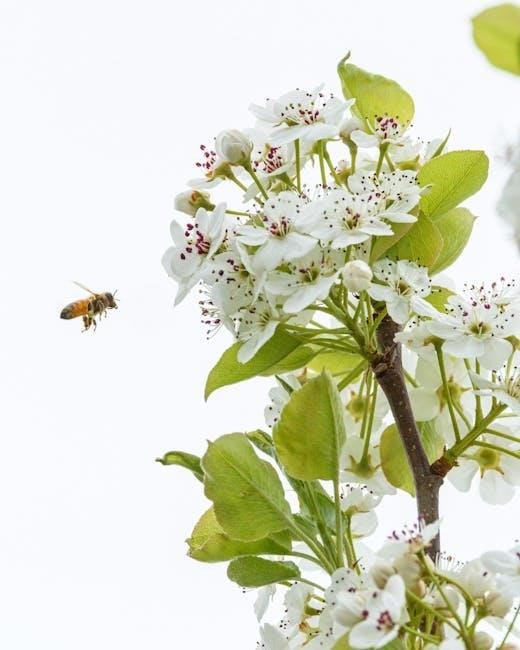
Building Your Hive Stand Step-by-Step
Preparing the Materials for Assembly
Constructing the Frame and Base of the Stand
Assembling and Securing the Stand Components
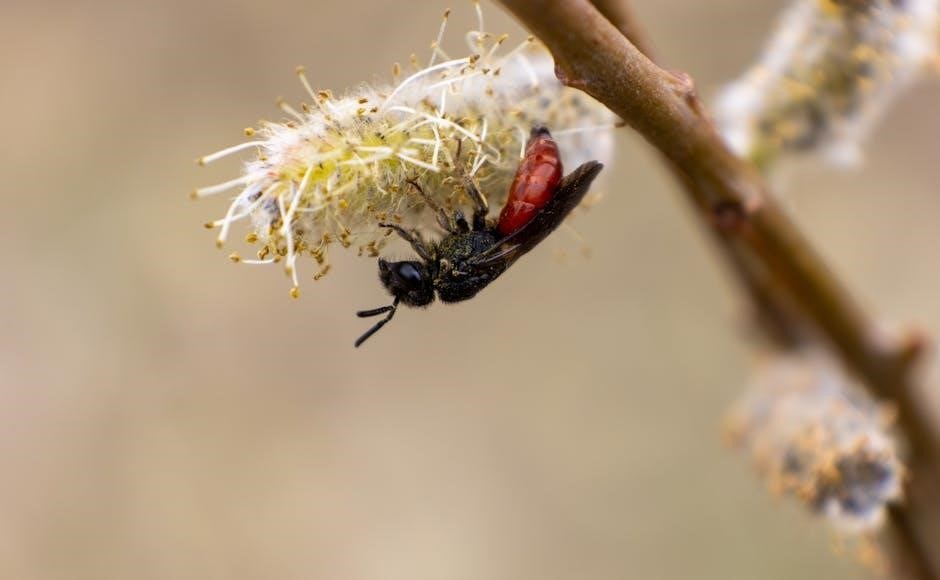
Installing and Positioning Your Hive Stand
Leveling the Ground for Proper Stand Placement
Positioning the Hive Stand in Your Apiary
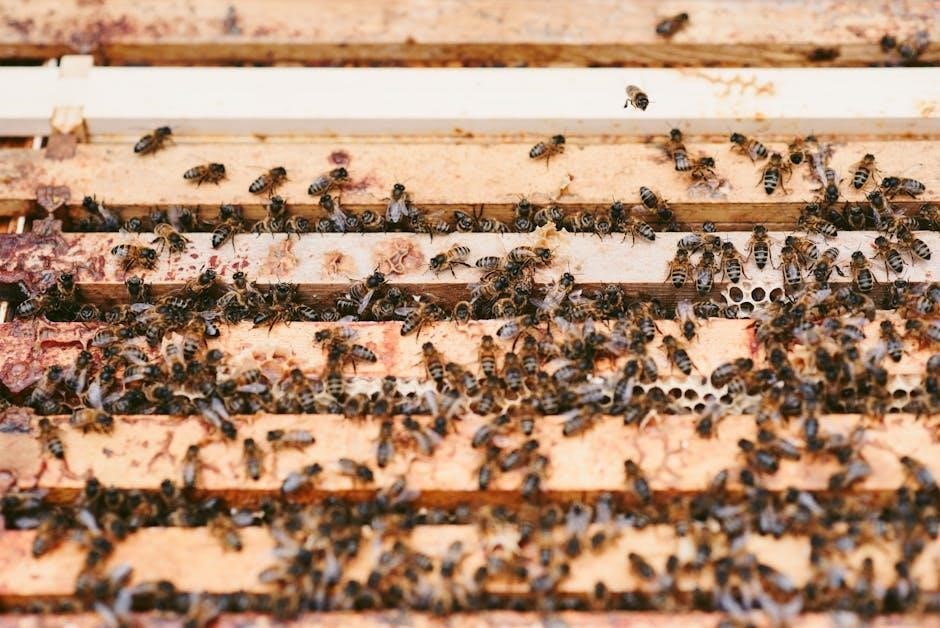
Maintenance and Upkeep of Your Hive Stand
Cleaning and Inspecting the Stand Regularly
Repairing and Reinforcing the Stand as Needed
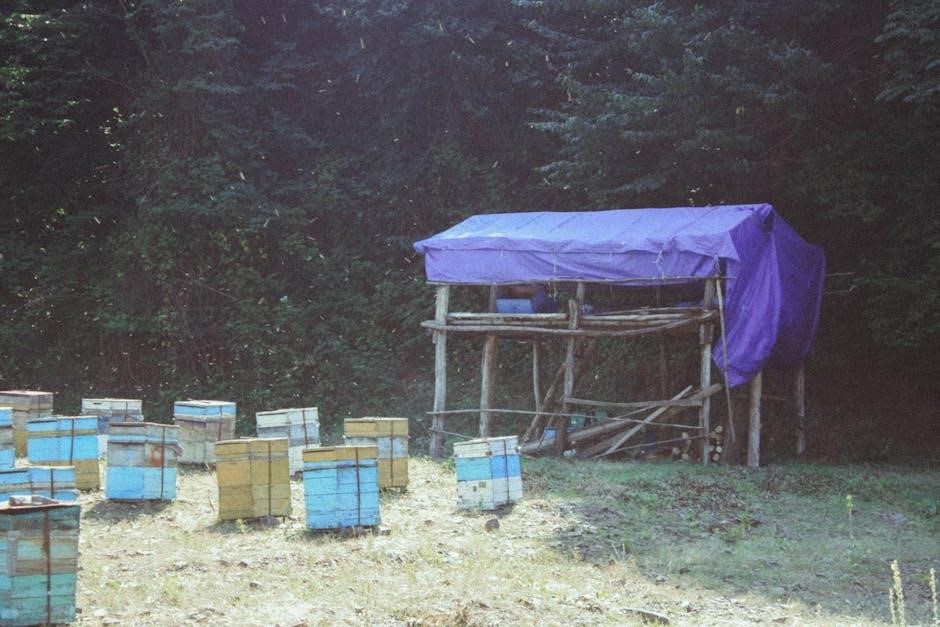
Safety Considerations for Hive Stand Construction
Ensuring Stability to Prevent Hive Collapse
Protecting Yourself and the Bees During Construction
Popular Hive Stand Plans and Designs
Langstroth Hive Stand Plans for Standard Hives
Top-Bar Hive Stand Plans for Alternative Hive Designs
National Hive Stand Plans for Multiple Hive Support
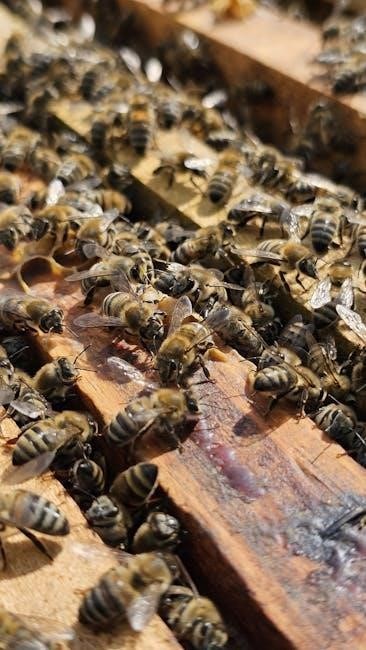
Downloading and Using Hive Stand Plans PDF
Where to Find Free and Paid Hive Stand Plans Online
How to Choose the Right Plan for Your Needs

Customizing Your Hive Stand Plan
Modifying Plans for Specific Hive Types or Sizes
Adding Features for Improved Functionality
Final Tips for Successful Hive Stand Construction
Encouragement to Start Building Your Hive Stand